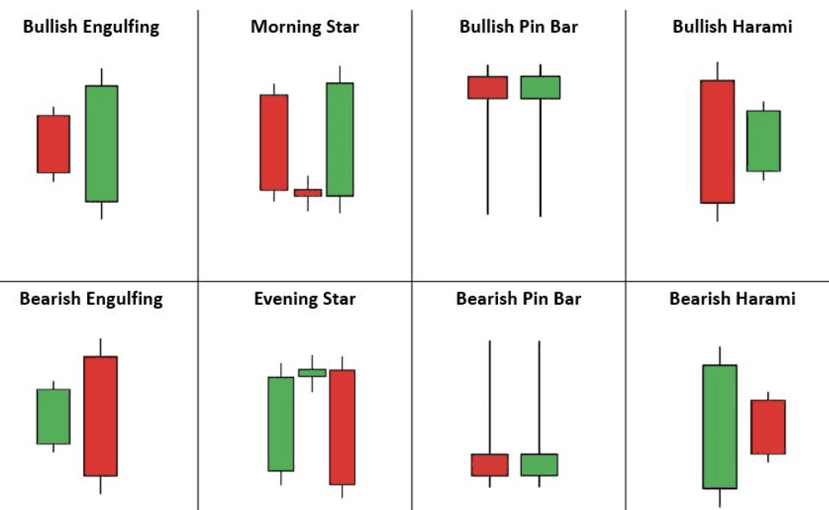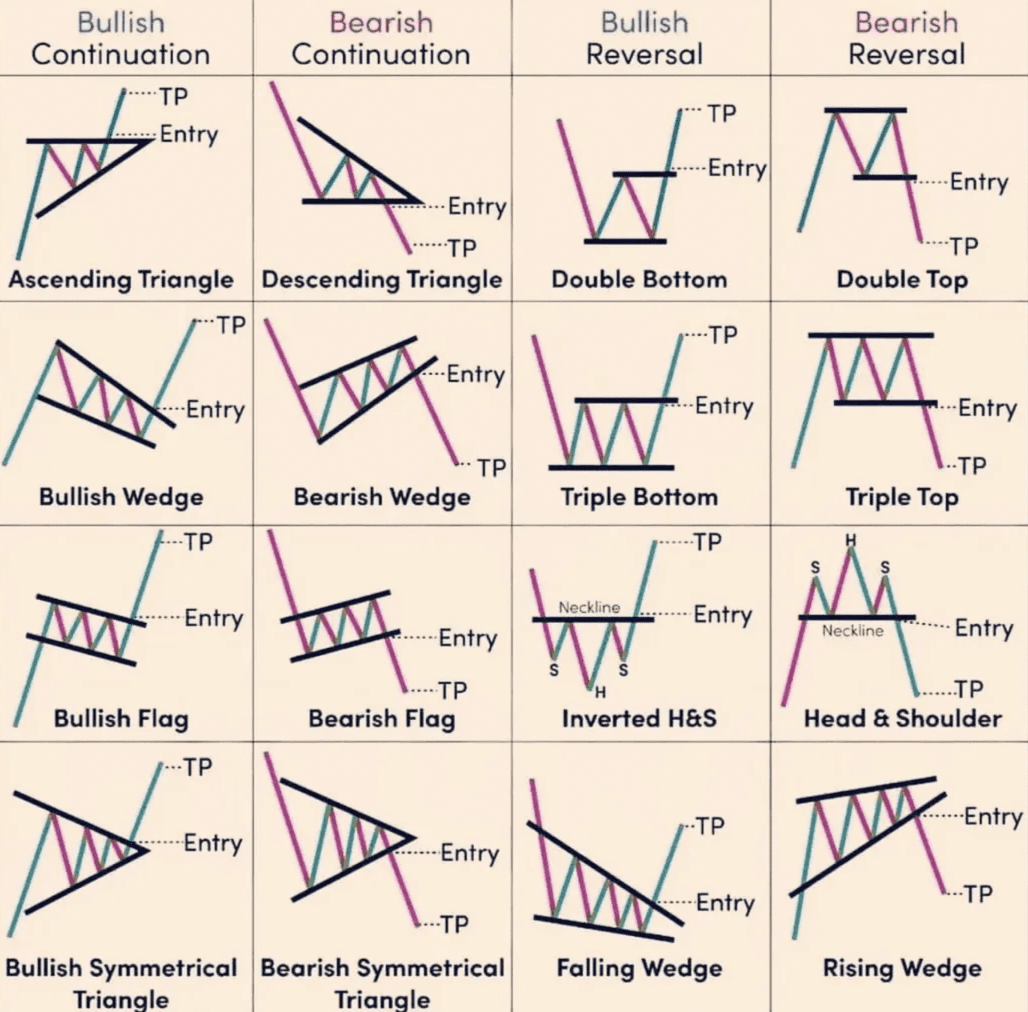Many new crypto traders believe they need a huge starting capital to see significant profits. In reality, skills are often more important than size. With disciplined risk management and the ability to read chart patterns, even a small starting balance — for example, $680 — can grow into tens of thousands over time.
One of the most valuable skills in trading is pattern recognition. Chart patterns reveal market psychology, showing where price is likely to move next. Mastering them allows you to:
Identify high-probability entries and exits
Clearly define the timing of your trades
Effectively manage risks
Step 1: Four main categories of chart patterns
1. Bullish Continuation 🚀
Examples: Ascending Triangle, Bullish Wedge, Bullish Flag, Bullish Symmetrical Triangle
Meaning: Price pauses momentarily before continuing to rise. Ideal for early entry into an existing upward trend.
2. Bearish Continuation 📉
Examples: Descending Triangle, Bearish Wedge, Bearish Flag, Bearish Symmetrical Triangle
Meaning: Price consolidates before continuing to decline. Suitable for short positions or closing long trades.
3. Bullish Reversal 🔄
Examples: Double Bottom, Triple Bottom, Inverted Head and Shoulders, Descending Wedge
Meaning: The downward trend shows signs of ending, with a potential transition to an upward trend. Great for identifying the bottom.
4. Bearish Reversal ⚠️
Examples: Double Top, Triple Top, Head and Shoulders, Ascending Wedge
Meaning: The upward trend is weakening, signaling a potential reversal downwards. Helps to lock in profits before declines.
Step 2: Build a trading plan around patterns
Capital Distribution
Start with $680
Risk only 2–3% per trade (approximately $14–$20)
Using Leverage
For strong setups, use moderate leverage (3–5x)
Avoid excessive leverage to reduce the risk of liquidation
Entry and exit rules
Enter when the price breaks the pattern with confirmation
Set a stop-loss just beyond the opposite side of the pattern
Target profit based on measured movement (height of the pattern projected from the breakout)
Step 3: Increasing profits over time
Real growth comes from consistent small wins, not one big trade.
Scenario example:
Profit 3–5% per trade
Repeat over 100 trades with discipline
Results can significantly increase
Hypothetical Growth
Trade 1: $680 → $714
Trade 10: $960 → $1,008
Trade 50: $5,200 → $5,460
Trade 100+: Potentially $40,000+
(Note: This is a hypothetical example, not a guarantee.)
Step 4: Risk management is key
Even the best patterns sometimes fail. Survival in trading depends on:
Always use a stop-loss
Avoid emotional trades and chasing breakouts
Trade in line with the broader market trend
Step 5: Practice before going live
Backtest these patterns using historical charts
Learn to confirm breakouts using RSI, MACD, and volume analysis
Focus on filtering out false signals
✅ Final Takeaway
If you can quickly recognize these 16 patterns and apply them with good risk management, you will be ahead of most traders. A combination of skills, discipline, and
Growth can turn a small account into something much larger over time — but only with patience and consistent execution.
If you enjoyed the content, write "Ready" and press subscribe, like, comment, and share with others. Thank you!❤️